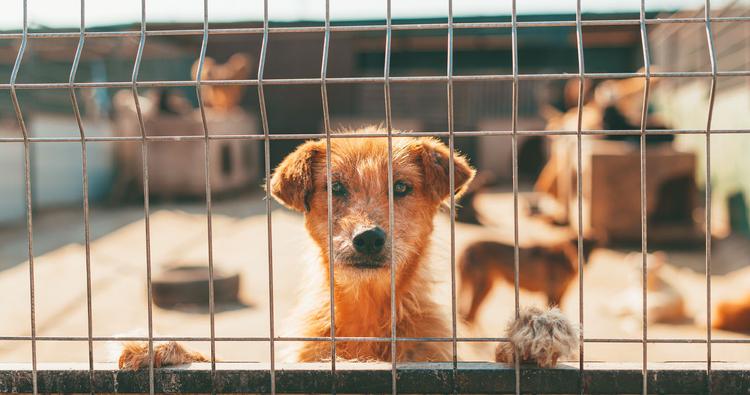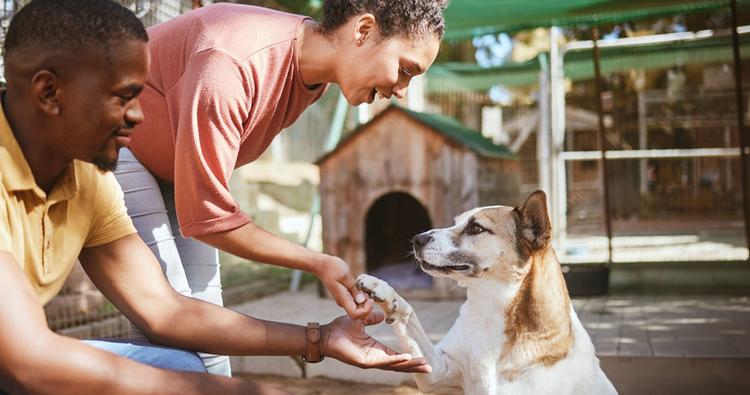5 Tips to Make Pet Costs More Affordable
Is the responsibility of taking care of your pet causing you to worry about your budget? Rest assured, there are a number of ways to minimize this financial stress.
Is the responsibility of taking care of your pet causing you to worry about your budget? Rest assured, there are a number of ways to minimize this financial stress.
by Adopt a Pet, | May 12, 2024

BONNINSTUDIO / Stocksy
Most good dog or cat parents know that having a pet can be a budgeting challenge. Initial adoption fees aside, it’s essential to map out how you plan to pay for future spending on your new family member. Pets require a lifetime of care, including vet costs, food, toys, and other supplies. Be sure to check out more detailed lists of cat expenses and dog costs so you’re fully prepared. TL;DR — it’s more than you’d think.
Lucky for you, there are an assortment of ways to save money that won’t compromise your ability to provide your pet with an excellent quality of life. Read below for some hacks to cut costs and make raising your pet that much more stress-free.
These tips for keeping your pet care on a budget are easy and designed to cumulatively make a positive impact on your bank account. There’s no time like the present, so let’s get started.
Keeping an eye on your local pet supply stores and manufacturers’ websites for sales and discount codes can save you a lot of money. In particular, take advantage of bulk-buying non-perishable items or food with a longer shelf life when they go on sale or you find a coupon. It’ll never go to waste, and you’ll have plenty of products to last you until the next sale goes down. Here are a few items you may want to buy in bulk:
Canned food (perishable after a few years, but check expiration date)
Pet treats (which you can freeze)
Kitty litter
Doggy waste bags
Pet toothpaste and toothbrushes
Pet shampoo
Puppy pads
Catnip (which you can freeze)
Your furry bestie is focused on comfort and play. So why not cut corners with some homemade alternatives to expensive, store-bought accessories and products?
Dog toys: Does your pup live to destroy their toys? Try researching and investing in indestructible toys. You can also hit your local dollar stores and yard sales for inexpensive new or barely used toys.
Cat toys: Get free, sturdy cardboard boxes from stores (they usually just throw them away). All you have to do is turn them on their sides, cut a hole or two, and your cat will be endlessly entertained.
Pet beds: Try buying a pet bed replacement cover and fill it with stained or ripped sheets, towels, and blankets (you can also buy these inexpensively at thrift stores). An “egg crate” foam mattress topper folded in half or quarters will also do the trick, as will couch cushions you no longer want.
Pet blankets: Cats and small dogs often love a plush towel that’s been folded up to just their size. You can sew the sides together, or if you can’t sew, use iron-on hemming material to keep it from unfolding.
Pet grooming: You’ll save a whole lot by cutting out pet grooming costs by using the countless eco-friendly products out there to primp and bathe your pet at home. If you want to save even more, try your hand at making some homemade grooming products.
Pets who have been spayed or neutered have fewer health problems, which results in fewer vet bills. Spaying and neutering likewise result in your pets biting less, avoiding potential lawsuits (80 percent of dog bites on humans are from intact male dogs). They are less likely to try to escape and cause a car accident by running into the road or damage your home or yard.
Of course, they also spare unwanted puppy and kitten litters, which are undeniably cute but can create an ugly ripple effect of added expenses. If you can’t afford the procedure, look into the many low-cost pet clinics and charitable organizations that can help.
While it might at first seem more budget-friendly to buy cheap pet food (which is rife with carb-heavy fillers), higher-quality pet food (especially the fresh kind) typically means a healthier pet. And a healthier pet means fewer vet bills over time. Check out the feeding instructions and do some math: You may find that the cost per serving of the more expensive foods actually works out to a lower cost per feeding for your pet, with better nutrition. If you really want to lean into nutrition and savings, you can also cook meals for your dog and your cat from scratch at home.
Regular, preventative vet care is an important part of keeping your pet healthy and can minimize vet visits in the long run by catching health issues early on. The goal is to keep your furry friends as healthy as possible for as long as possible.
As your pet gets older or if your pet suffers a medical emergency, they will likely require more frequent trips to the vet, and costs will inevitably mount. To help ward off those costs, you can invest in pet insurance. Pet insurance costs will vary based on how expansive the coverage is, as well as your pet’s health status. Most insurance companies — and this cannot be emphasized enough — will not cover pre-existing health issues. This means the earlier you get pet insurance, the better it is for you financially in the long run.
Price-comparison tools (such as Best Company or Forbes Advisor) can help you find an insurance plan that works in your budget. If you still can’t find an affordable plan, call around to find a vet who offers low-cost services on certain days, discounts, or payment plans. Just do not skimp on vet care because it will end up costing you more in the long run and, of course, is not in your pet’s best interest.
Impact of the Owner-Pet and Client-Veterinarian Bond on the Care That Pets Receive
The Impact of Pet Health Insurance on Dog Owners’ Spending for Veterinary Services


Adoption Advice

Foster & Volunteer

Shelters & Rescue

Shelters & Rescue
Looking to adopt from a shelter? This guide will help you familiarize yourself with common shelter terminology about both the adoption process and pet profiles.

Adoption Advice
The reality is, it costs a lot of money to care for shelter animals and to keep a shelter clean and safe. Find out what you can expect to pay when bringing a new pet home.

Adoption Advice
Considering renting with pets? Read more to learn about renter policies and how to navigate them.

Adoption Advice
Thinking about adopting a hypoallergenic pet? Explore our guide for insights on allergy-friendly options, ensuring a harmonious bond.

Adoption Advice
Thinking of adopting a dog with kids? Read more to learn about the benefits pets can have on children.

Foster & Volunteer
Fostering is a great way to dip your toes into the pet-parenting waters, while helping a pet in need.

Adoption Advice

Adoption Advice
Considering getting a pet but unsure if you want a cat or dog? Here are 10 differences to consider.

Shelters & Rescue
Looking to adopt? Here are some helpful guidelines on finding a reputable pet rescue organization.